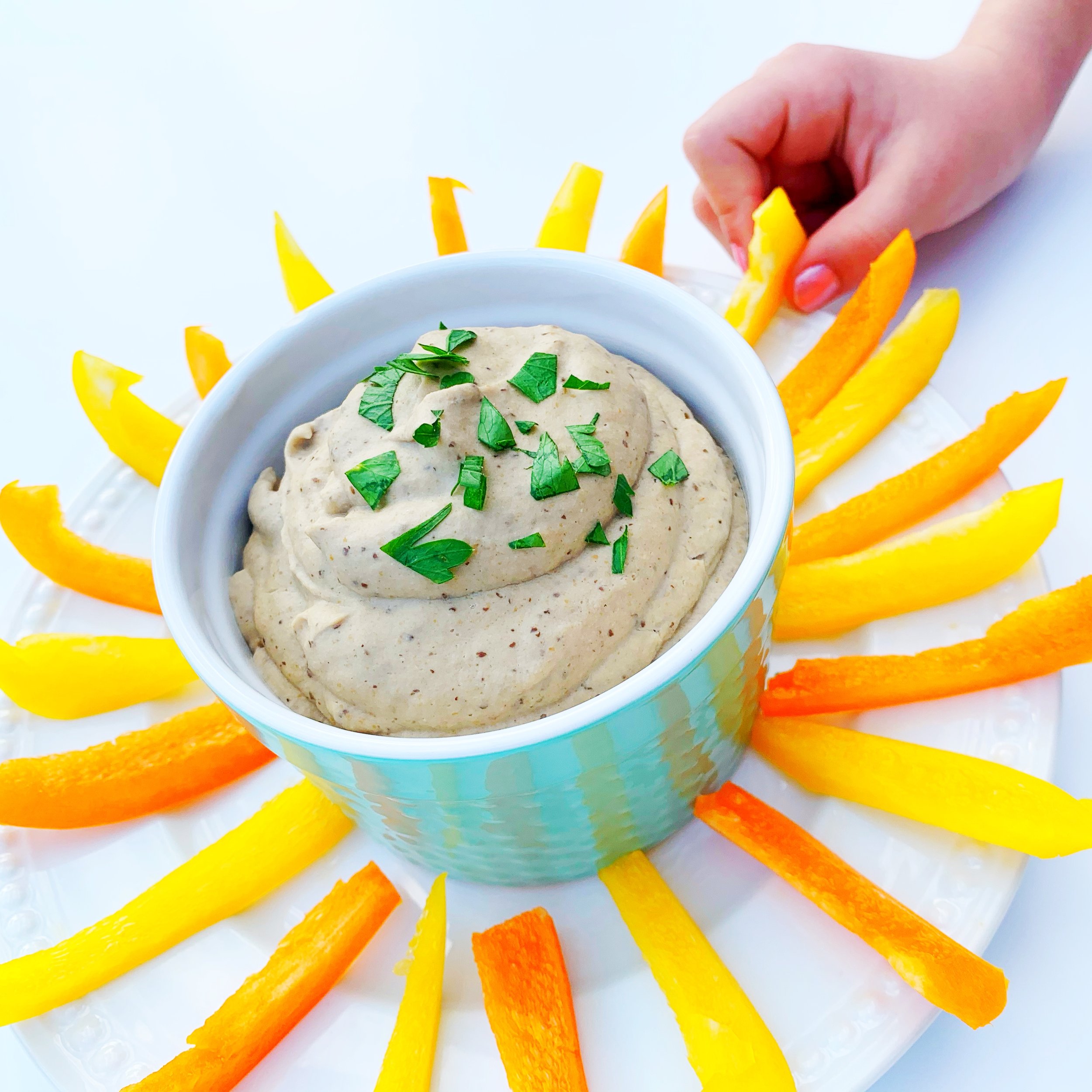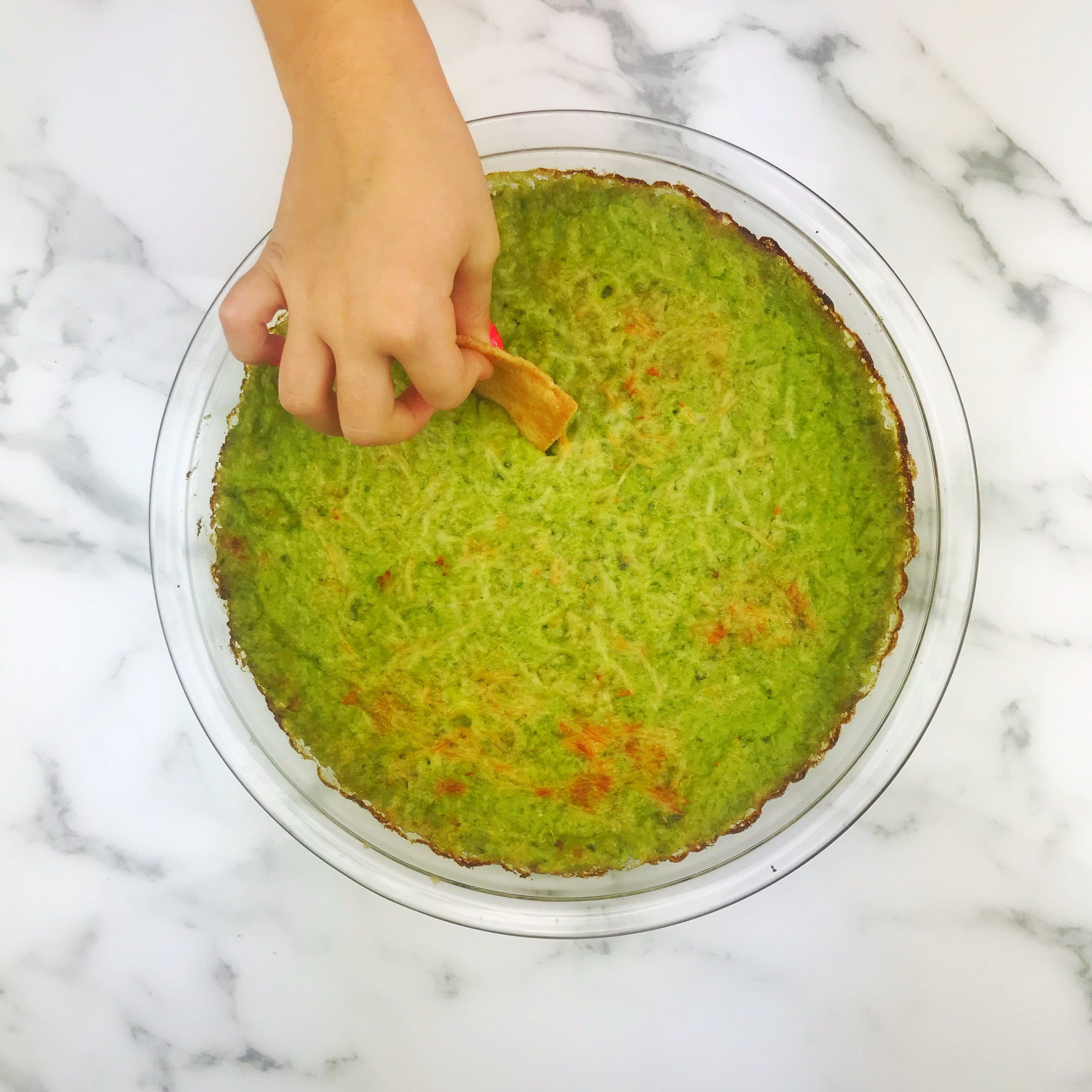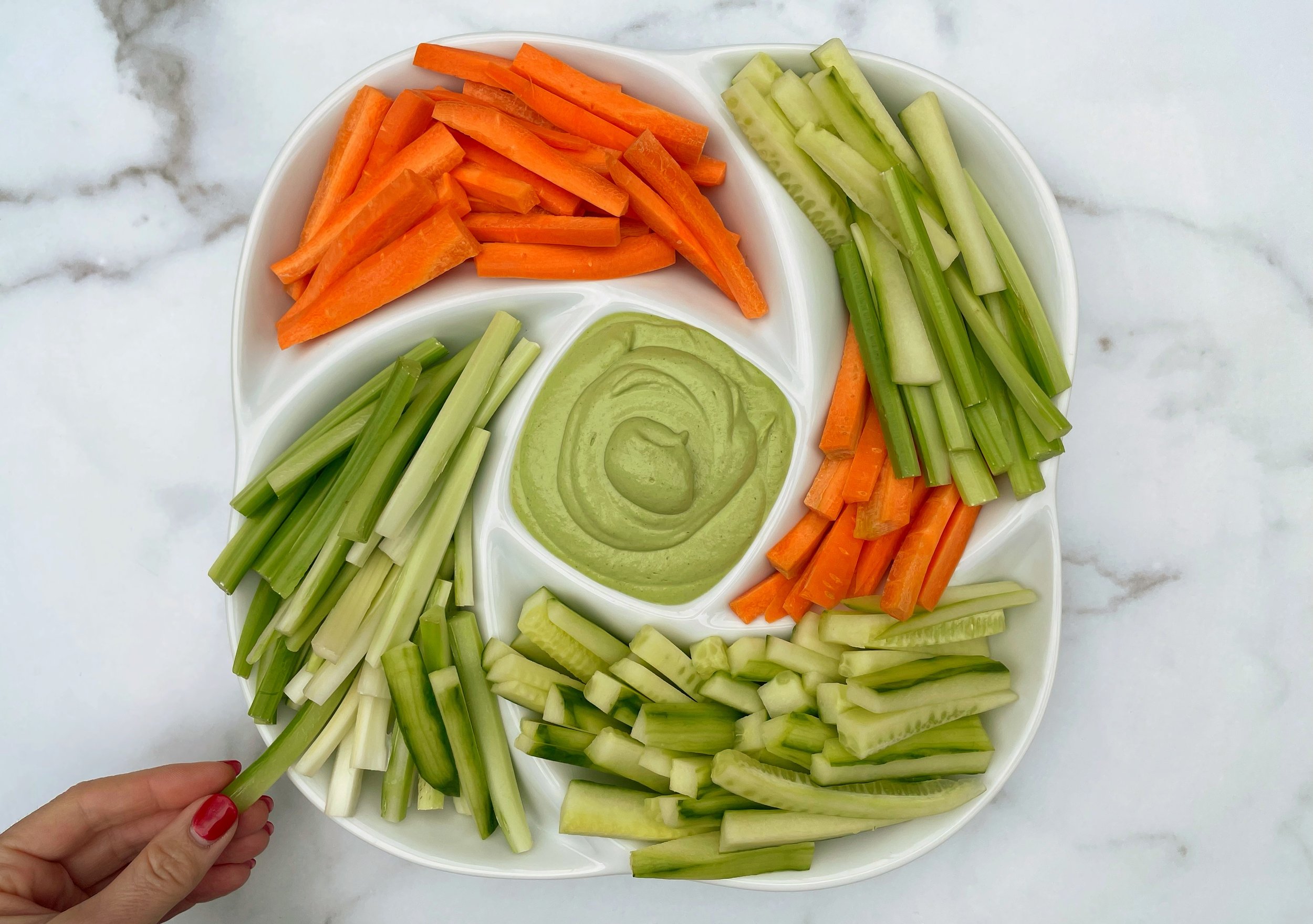Top 10 Ways to Help Kids Enjoy Eating Vegetables
So...... Let's talk Veggies and Kids.
Are you a parent who cringes at the thought of putting effort into buying a new veggie, finding a recipe for it, preparing, cooking and serving it to your kids only to hear, "I'm not eating that!?"
Thank you to this sweet toddler’s parents for sharing!
If so, you are in great company and definitely not alone. In fact, it's one of the most common frustrations and barriers to a healthier diet that I hear on a regular basis from parents and clients. The good news is that there are many simple things you can do to improve the situation.
By committing to a combination of strategies that include both food- and behavior-related changes, you can get your kids on board with veggies in a matter of weeks. As a pediatric registered dietitian in private practice, I've found while working with hundreds of families that helping kids become comfortable at their own pace around veggies helps lead to more veggie acceptance. Here are my top 10 tips for getting your kids to (happily) jump on the veggie train:
Be a positive role model.
The more often you eat with your kids and let them see you enjoying all kinds of produce, the more likely they will be to try it themselves.
Speaking positively about the taste and texture of veggies also goes a long way toward helping your kids develop an acceptance of a wide variety of plant foods.
Repeat, repeat, repeat!
Did you know that it takes an average of 20 exposures to a new food before a child will decide if he or she likes it?
If you serve a veggie to your child and he or she refuses it, don't give up! There is value in the exposure, even if the child doesn't taste it but rather pushes it around, eyes it, touches it, ignores it but lets it hang around on the plate.
With patience and perseverance, you may find yourself with a spinach-lover after the 8th, 9th or 10th time you've served it.
Make it a habit to discuss the connection between plant foods and health in terms they understand.
Use teachable moments away from meals to highlight the benefits of a healthy diet and the ways that good food helps our bodies thrive and grow. Help your kids make the connection between eating veggies and feeling our best.
I often find the car a great place to talk about food and the body. We're all trapped together for a few moments while we get from one place to another, so I ask about their day, what they’ve eaten, and how it made them feel afterwards and later.
If your child expresses disappointment in his or her performance or energy level in a sports event, it can be a good time to talk about what he or she ate beforehand, and how to choose a healthier combination of foods next time that will provide a more sustained, even source of energy that will last throughout the game.
A stomach ache after a birthday party where lots of sweets were served is a great opportunity to talk about the value of moderation, and how treats can be a fun way to celebrate as long as you don't overdo it.
Offer new veggies along with old favorites.
For many kids, familiarity offers a level of comfort that gives them the courage to branch out. My youngest daughter has two ratty old "lovies" or little blankets that she has always taken with her to bed. No matter where she sleeps, if she has her lovies, she sleeps just fine. Favorite vegetables can have the same effect. If there are certain veggies you know your child enjoys, serve new ones at the same time and let the old favorite serve as a "food bridge," that can help your child learn to like something different.
Dress 'em up.
Sometimes a little butter, salt or cheese is all it takes to create a broccoli or spinach lover.
Once familiarity and acceptance has been established, you can choose whether to make it a goal down the road to dial back the amount you use.
Involve your kids in planning/shopping/prepping/cooking.
This tip is hugely effective! Allowing kids to participate in meal planning, prepping and cooking gives them a sense of ownership and control over their choices which, let's face it, is not something they often get to have in life, in general.
Involving them can be simple and includes a range of options which include:
Letting them pick out a couple of vegetable options at the grocery store or in your online grocery cart.
Letting them wash the veggies.
Letting them trim, peel or cut the veggies (if age-appropriate).
Letting them choose the method of preparation.
Helping them participate in the cooking process.
Visiting a farm and picking produce together that you can take home and eat.
Growing some produce in a home garden or even a few fresh herbs in a little pot on the window sill.
Don't wait for a party to keep a prepared veggie & dip tray handy in the fridge
When kids are on the run and looking for a quick nosh to tide them over until dinner or until the next activity, a prepped tray of colorful veggies in the fridge can be the perfect fly-by option that also happens to promote health.
Keep healthy dips handy for flavor and fun and you may find your veggie tray empty by the end of the week!
Try out my easy and healthy dip recipes that pair well with vegetables, which include: my mom’s Baba Ganoush recipe, Warm Parmesan Artichoke dip and my Cashew dip!
Have a clear understanding of the division of responsibilities.
A division of responsibility works best when the parents decide when and where meals happen and what will be served, and the kids decide whether and how much to eat.
On the other hand, don't make special meals or offer other foods in addition to what you have already prepared if your child refuses to eat what's on the table.
Over time, you'll be shocked at how effective this combination of strategies can be. I would love to hear about your experiences - feel free to drop me a line in the comments section below!
If you’re struggling with picky eating behaviors in your kids, check this post, Reduce Picky Eating with Repeated Exposures. You can also grab my FREE guide to reducing picky eating, or better yet, sign up for my online course for parents, called Solve Picky Eating.





